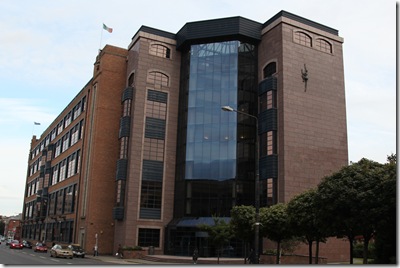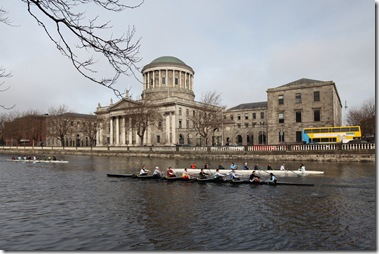The report published by the National Institute for Regional and Spatial Analysis (NIRSA), A Haunted Landscape: Housing and Ghost Estates in Post-Celtic Tiger Ireland was described in the media as 'a scathing and unambiguous attacks on the role of politicians' in the housing debacle. The report highlights how ludicrous fiscal policy and reckless planning decisions resulted in thousands of uninhabited and unwanted, exorbitantly priced, houses being built in hundreds of estates at undesired, remote and poorly serviced locations across the country. It is a pity that the report did not also shine a tangential bright light on the toxic and corrosive impact of building societies, driven by the legislation governing them.
When environment minister, Pádraig Flynn, was steering the Building Societies Bill 1989 through the Oireachtas in February of that year he said that it would ‘set very few boundaries to the future and scope of societies’. This included the empowering of building societies to acquire, hold, dispose of and develop land where the land is used for commercial purposes – other than residential.
The Bill was welcomed by Fine Gael spokesman Alan Shatter with an exclamation that Irish building societies 'must not be constrained by legislation enacted for a different time'. It was also welcomed by Ruari Quinn and the Labour Party although he expressed reservations about their capacity to compete in financial services and a desire that the historical role of the building societies would be retained.. Building societies were granted virtually unlimited freedom to act like banks and their attempts to do so subsequently imploded in abject failure.
There were 23 building societies in existence when the State was founded. There were 10 in existence when this legislation was passed. The savings of their 1.25 million members’ at that time was equivalent to 20% of all savings in the country. More than six of every ten persons who financed the purchase of their own home in the late 1980’s did so by means of a loan from a building society. Two failed building societies remain in existence, courtesy of NAMA and the taxpayer.
But there is a thriving, if more rationalised, building society sector in Britain. The 50 building societies there have deposits of £220 billion, accounting for almost 22% of all deposits. These finance residential mortgages of £225 billion, about 19% of the total residential mortgages outstanding. Apart from offering their members better value than banks, British building societies must not raise more than 50% of their funds from wholesale markets, but the average proportion raised from this source is actually closer to 30%.
The scale and success of the credit union movement in Ireland reflects a strong appetite for community-focused savings and loan institutions with mutual status. Should the inquest into the demise of our housing sector not also include a recommendation for revised legislation that ensures building societies stick to their fundamental mission of making loans that are secured on residential property funded substantially by their own members?
How else can the young families of the future avoid being trapped in unfinished estates bearing burdensome loan liabilities on terms that are utterly unsustainable, even in a recovered economy?









